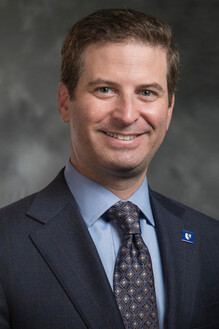Key Points
- Prompt and complete removal of CIED systems is strongly recommended by all major professional societies, however only 1 in 5 patients with CIED infection undergo prompt extraction (<6 days after infection) in a nationally-representative Medicare cohort.
- Compared to extraction, no extraction is associated with a significantly higher risk-adjusted 1-year mortality rate (HR 0.73, 95% CI 0.70-0.81).
- Regionalization of care and creation of regional health system pathways may promote cooperation between extraction centers and referral centers, to increase extraction rates and improve morbidity and mortality for patients with CIEDs.

The risk of CIED infection increases proportionally over time (from 6% at 15 years to 12% at 25 years since implant), and is associated with high morbidity and mortality. As guideline-directed medical therapy and other modern interventions increase the life expectancy of heart failure patients and other routine recipients of CIEDs, the prevalence and impact of CIED infections will continue to increase in the years to come. Prompt and complete removal of CIED systems is strongly recommended by all major professional societies across the US and the globe, however it remains unclear how these guidelines are implemented in real-world settings.
During the 2022 American College of Cardiology Conference, Dr. Sean Pokorney presented results from a study titled “Low Rates Of Guideline Directed Care Associated With Higher Mortality In Patients With Infections Of Pacemakers And Implantable Cardioverter Defibrillators”. From 1/2006 to 12/2019, they followed a population of 1,065,549 Medicare fee-for-service patients after a de-novo CIED implant, to determine the incidence of CIED infection, practice patterns in CIED extraction and key outcomes such as all-cause mortality.
A total of 11,619 patients (1.1%) developed CIED infection, at a mean of 3.7 years since implant. Compared to patients who did not develop infections, patients with CIED infections had a higher burden of medical comorbidities but otherwise had similar age and sex distribution. Overall, only 13% of patients had an extraction within 6 days of diagnosis (which was ascertained using a combination of ICD-10 codes for device infection as well as antibiotic use), while most patients (82%) did not have an extraction within 30 days of CIED infection. Notably, both female and African-American patients were less likely to undergo CIED extraction. Lastly, no extraction was associated with a significantly higher risk-adjusted 1-year mortality rate, compared to extraction (HR 0.73, 95% CI 0.70-0.81).
In conclusion, extraction of infected CIED systems remains an underutilized intervention among Medicare patients in the US, despite strong and unanimous recommendations from professional societies in support of prompt and complete CIED extraction. When interviewed after the ACC presentation, Dr. Pokorney commented that this pattern may be partly explained by the fact that fewer providers perform this procedure, and there may be an overestimation of the risks associated with this procedure. Therefore, regionalization of care and creation of regional health system pathways may promote cooperation between extraction centers and referral centers, to increase extraction rates and improve morbidity and mortality for patients with CIEDs.


